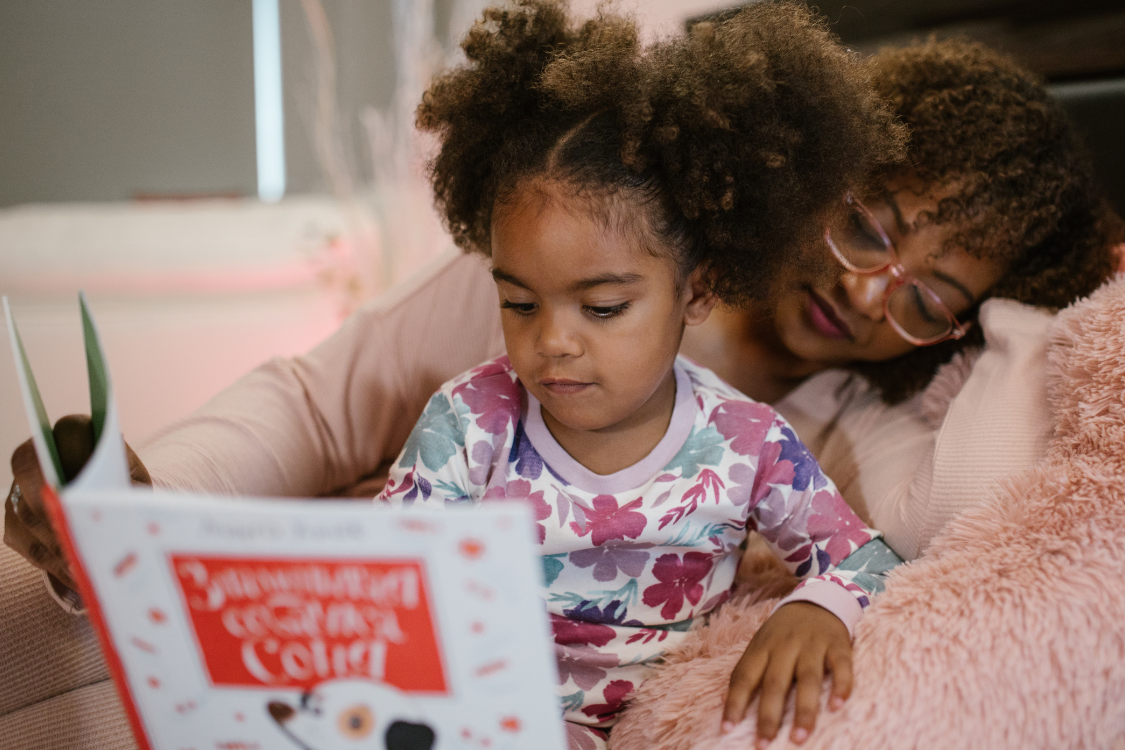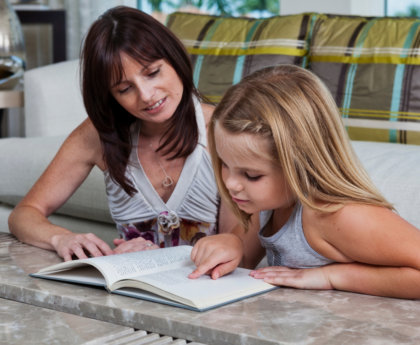Remember the magic moment when your child first realized that “The Three Little Pigs” wasn’t just a fun story, but actually followed a pattern? That’s the power of understanding text structure and the secret framework that helps young readers make sense of stories and information. When children recognize these patterns in their favorite picture books, reading transforms from decoding individual words to truly understanding meaning.
What Text Structure Means for Young Learners
Text structure refers to how authors organize information and ideas within their writing. For prekindergarten and kindergarten students, recognizing these organizational patterns builds the foundation for reading comprehension that will serve them throughout their academic careers.
Young children naturally begin to understand text structure through repeated exposure to story patterns. When you read “Goldilocks and the Three Bears” for the twentieth time, your child starts anticipating what comes next, not just because they’ve memorized the story, but because they’re internalizing the logical sequence of events.
Understanding text structure helps children predict what might happen next, remember important details, and make connections between different parts of a story. These skills directly support comprehension development, which is the ultimate goal of all reading instruction.
Text structures also provide mental frameworks that help children organize their own thinking and storytelling. When a kindergartener tells you about their day using “first, then, next, finally,” they’re applying sequence structure they’ve learned from books.
The beauty of teaching text structure through beloved picture books is that children already know and love these stories, allowing them to focus on the organizational patterns without getting lost in unfamiliar content.
Sequence Structure: Following the Story Step by Step
Sequence structure presents events in chronological order, helping children understand that stories unfold in logical time patterns. This is often the first text structure young children master because it mirrors their daily experiences.
“The Very Hungry Caterpillar” by Eric Carle perfectly demonstrates sequence structure. The story follows a clear chronological order: Monday through Sunday, showing what the caterpillar eats each day, followed by the transformation sequence from caterpillar to chrysalis to butterfly. Children can easily follow this pattern and often predict what day comes next.
“If You Give a Mouse a Cookie” by Laura Numeroff creates a circular sequence where one action leads to another in a predictable chain. The mouse wants a cookie, then milk, then a napkin, and so on, eventually circling back to wanting another cookie. This helps children understand cause-and-effect sequences within the larger sequential pattern.
“Brown Bear, Brown Bear, What Do You See?” by Bill Martin Jr. uses repetitive sequence structure. Each page follows the same pattern: animal identification, question, and answer leading to the next animal. This predictable sequence helps emergent readers participate in the reading process.
When reading sequence stories, use time-order words like “first,” “next,” “then,” and “finally.” Point out transition phrases that signal what’s coming next. Ask children to retell the story using these sequence words, which reinforces their understanding of chronological organization.
Children often enjoy acting out sequence stories or drawing pictures showing the order of events. These activities strengthen their grasp of how events connect in logical time progressions.
Cause and Effect: Understanding Why Things Happen
Cause and effect structure shows relationships between events, helping children understand that actions have consequences. This pattern appears frequently in picture books and connects directly to children’s real-world experiences.
“Caps for Sale” by Esper Slobodkina demonstrates clear cause-and-effect relationships throughout the story. Because the peddler falls asleep under a tree, the monkeys steal his caps. Because the monkeys steal his caps, the peddler becomes frustrated and tries various strategies to get them back. Because he angrily throws his own cap down, the monkeys copy him and throw all the caps down, which solves his problem. This chain of events helps children understand how one action directly leads to consequences.
“The Little Red Hen” shows cause and effect through work and consequences. Because the other animals won’t help plant, tend, harvest, or bake, they don’t get to eat the bread. The hen’s hard work causes her success, while the other animals’ laziness causes them to miss out.
“Alexander and the Terrible, Horrible, No Good, Very Bad Day” by Judith Viorst presents multiple cause-and-effect relationships. Alexander’s bad morning causes him to feel grumpy, which affects his entire day. Each mishap causes his mood to worsen, helping children understand how emotions and events can be connected.
When reading cause-and-effect stories, use signal words like “because,” “so,” “since,” “as a result,” and “therefore.” Help children identify the cause (what happened) and the effect (what happened because of it). Ask questions like “Why did that happen?” and “What happened because of that?”
Creating simple cause-and-effect charts helps children visualize these relationships. Draw arrows showing how one event leads to another, making the invisible connections visible and concrete.
Problem and Solution: Stories That Fix Things
Problem-and-solution structure presents a challenge and shows how characters resolve it. This pattern teaches children that difficulties can be overcome through thinking, effort, and creativity.
“Corduroy” by Don Freeman follows a classic problem-solution structure. Corduroy’s problem is his missing button, which he believes prevents children from wanting him. His solution involves searching the department store at night to find a replacement button. The ultimate solution comes when Lisa loves him just as he is.
“The Carrot Seed” by Ruth Krauss presents the problem of a carrot seed that everyone says won’t grow. The little boy’s solution is persistent care and faith. Despite everyone’s doubts, his steady watering and waiting solve the problem when the carrot finally grows.
“Pete the Cat: I Love My White Shoes” by Eric Litwin shows Pete encountering the problem of his white shoes getting dirty. Instead of getting upset, Pete’s solution is maintaining a positive attitude, singing his song, and continuing to love his shoes regardless of their color changes.
When reading problem-solution stories, help children identify the main problem early in the story. Ask “What’s wrong?” or “What problem does the character have?” Then guide them to discover how the character tries to solve the problem. Discuss whether the solution worked and why.
Children benefit from connecting story problems to their own experiences. When they face similar challenges, they can remember how book characters solved comparable problems, building their problem-solving toolkit.
Compare and Contrast: Seeing Similarities and Differences
Compare and contrast structure highlights similarities and differences between characters, settings, or situations. While less common in picture books than other structures, this pattern appears in stories that help children understand relationships and make comparisons.
“Frog and Toad” stories by Arnold Lobel constantly compare and contrast the two main characters. Frog is optimistic and energetic, while Toad tends to be more cautious and worrisome. Despite their differences, they share a strong friendship, showing children that differences can complement each other.
“The Three Little Pigs” compares and contrasts the three brothers’ approaches to building houses. The first two pigs choose quick, easy materials (straw and sticks) while the third pig chooses stronger but more difficult materials (bricks). The story contrasts their different work ethics and the resulting outcomes.
“Goldilocks and the Three Bears” uses compare and contrast through the size differences of the three bears and their belongings. Papa Bear’s things are too big, Mama Bear’s are too big, but Baby Bear’s are just right. This pattern helps children understand concepts of size, temperature, and appropriateness.
When reading compare-contrast stories, use signal words like “different,” “alike,” “similar,” “but,” “however,” and “on the other hand.” Create simple charts showing what’s the same and what’s different between characters or situations.
Visual organizers work particularly well for this structure. Draw two circles that overlap (Venn diagrams) or create simple T-charts showing similarities and differences.
Description: Painting Pictures with Words
Descriptive structure provides detailed information about a person, place, thing, or idea. In picture books, this structure often combines with illustrations to create rich sensory experiences for young readers.
“The Important Book” by Margaret Wise Brown uses descriptive structure to explore everyday objects. Each entry describes various characteristics of an item before returning to the most important quality. This pattern helps children understand that objects have multiple attributes while learning to identify main ideas.
“Chicka Chicka Boom Boom” by Bill Martin Jr. describes the alphabet letters’ adventure up the coconut tree. The descriptive language creates vivid images of letters climbing, falling, and helping each other, making abstract letters feel concrete and memorable.
“The Snowy Day” by Ezra Jack Keats uses rich descriptive language to portray Peter’s winter adventures. The text describes the appearance of snow, the sounds of footsteps, and the feeling of cold, helping children experience the sensory details of a snowy day.
When reading descriptive texts, encourage children to visualize what they’re hearing. Ask them to close their eyes and picture the scene in their minds. Point out descriptive words that appeal to different senses—what they might see, hear, feel, smell, or taste.
Drawing activities work especially well with descriptive texts. Children can illustrate what they visualize based on the author’s descriptions, strengthening the connection between words and mental images.
Build Text Structure Awareness in Daily Reading
Developing text structure awareness doesn’t require special programs or complex activities. Simple strategies during regular read-aloud time help children internalize these organizational patterns naturally.
Before reading, preview the book and identify its primary text structure. This mental preparation helps you guide children’s attention to the organizational pattern as the story unfolds.
During reading, use structure-specific language. For sequence stories, emphasize time-order words. For problem-solution stories, pause to identify the problem and predict possible solutions. This verbal highlighting makes invisible patterns visible to young learners.
After reading, help children retell the story using the text structure. Sequence stories can be retold with “first, next, then, finally.” Problem-solution stories can be summarized as “the problem was… and it was solved by…” This practice reinforces structural understanding.
Keep structure discussions simple and natural. Young children don’t need to memorize structure names, but they benefit from recognizing patterns. Focus on understanding rather than labeling.
From Structure to Stronger Readers
Understanding text structure provides young readers with powerful tools for comprehension that extend far beyond picture books. When children recognize organizational patterns, they become active participants in the reading process rather than passive listeners.
These early experiences with text structure prepare children for more complex reading tasks ahead. Students who understand sequence will more easily follow multi-step directions. Those who grasp cause and effect will better understand scientific processes and historical events. Children familiar with problem-solution patterns will approach challenges with confidence and creativity.
The goal isn’t perfection but familiarity. When children have heard hundreds of stories organized in predictable patterns, they develop an intuitive sense of how texts work. This foundation supports reading comprehension throughout their academic careers.
Ready to strengthen your child’s reading comprehension through systematic, engaging instruction? Start your free 7-day trial of the Reading.com app and discover how understanding text structure transforms young readers into confident, capable learners who truly understand what they read.





